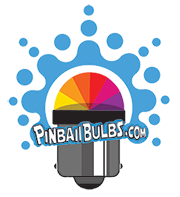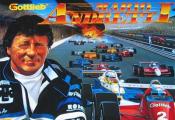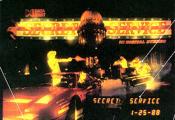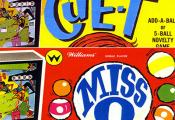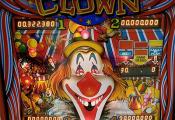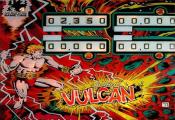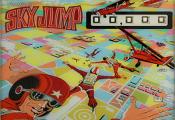|
Price: $209.99
|
Price: $209.99
|
Price: $119.99
|
|
Price: $119.99
|
Price: $149.99
|
Price: $129.99
|
GI / Backbox kit installation
For backbox and GI, we list the locations for the lamps. A machine generally has about 30 GI bulbs so it's not that confusing where to place each. GI is usually 44 twist in bulbs. Most the time you will want to access these from the underside of the playfield by unscrewing the lamp with a 1/4" socket. Strongly magnetic tools are your friend here and strongly recommended. If you do this with the machine on, it is easy to accidentally touch two prongs of a GI circuit together and blow a fuse. So be careful.
Sega and Data east games often have GI stapled in. You have to get to these bulbs from the topside. Unfortunately, there is no easy answer for this. So you just have to dismantel your game to get there.
Tips:
- Use clear cap bulbs where you do not see the bulb with your eyeball. These do a nice job of radiating light.
- Use frosted cap bulbs where you might see the bulb with your eyeball. This avoids getting blinding by the light. Frosted bulbs radiate light nicely, but are slightly dimmer than their clear capped counterparts.
- You want your GI to light up your playfield so you can track the ball easily. A properly lit machine can be played in the dark. Different colored bulbs have different brightness factors. All brightness can be offset by using spotlights. Consider these brightness scales:
Cool White Brightest bulb. Does not wash out plastics. Clean look Warm White Bright. Looks similar to stock look. Not as clean as cool white, but many prefer this look. Pink Second brightest bulb. Can be used to add some color without color bombing. Looks good under red, white, yellow, orange plastics. Looks good under busy plastics since it lights without the color bombing effect. Purple Almost as bright as pink but has some nice properties. Our purple is a very bluish purple. It looks great under blues. Looks great under busy plastics. Can be used in purple, blue, grey areas. Used in areas where you want a nice tint of light that's not white. Does not color bomb. Blue Bright, not as bright as purple. Heavy color bombs. Can be used well in back of machine or under ramps where you cannot see the plastic art anyway. Red Same as blue above Green Same as blue above Orange Not at all bright. Does not do well in GI. Should probably not be used for GI at all. We recommend pink, warm white, or cool white in place. Yellow Terrible under GI. Does not do well in GI - just too dim. Should probably look at warm white or pink instead. - Any bulb that can be seen by the naked eye should be frosted to avoid blinding yourself while playing
- Use spotlights to light center of playfield. Usually with a purple super bulb. These spotlights with this bulb do a nice job of lighting the playfield without having it look like the overhead lights are on. The purple spotlight bulb tends to activate the UV effects in greens and blues. Unless your playfield has none of these shades, purple is your friend here. And it does not end up looking all purple like you would expect.
- On bally/williams games, it is strongly recommended to disable "allow dim gi", setting #25 on the standard adjustment menu. LEDs do not dim well. To do this
- open coin door and press enter
- use right to get to adjustments and press enter
- select "standard"
- use right to get to adjustment 25, "allow dim gi" and enter to set it to "NO".
- escape the menu using left most button or power cycle machine.
- Many stern games starting with ACDC have a GI intensity option. This defaults to 50. We recommend setting it to 100, which is more light.
- Purple is a great color for GI. It colors the plastics without color bombing and activates UV sensitive artwork.. Purple under blue is magical. Try it for yourself and see, Purple in spotlights is also awesome and has the above advantages with a softer light that causes all blues, reds, greens and anything in between to pop.
- If a 555 bulb does not light when you insert it, make sure the light prongs are bent out evenly and slightly to the edge of the bulb.
